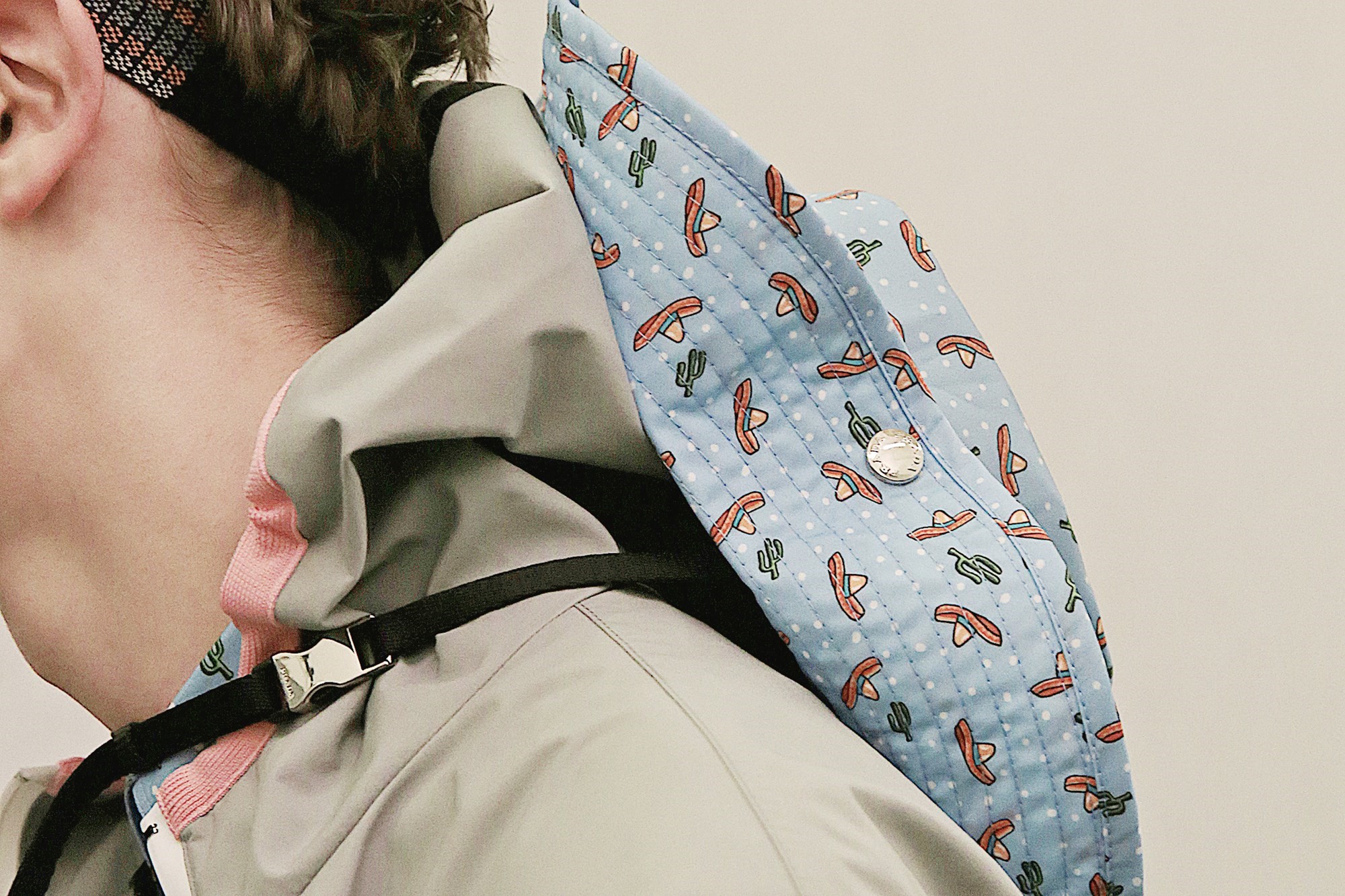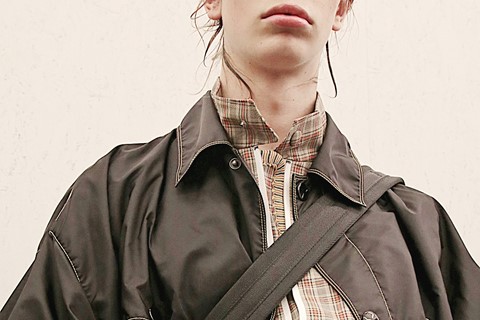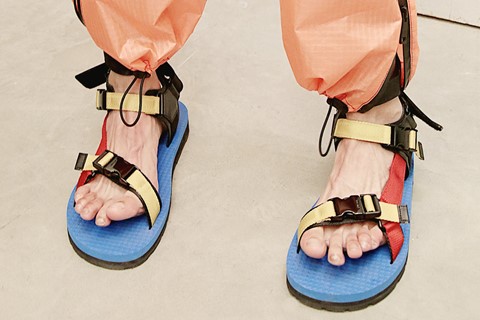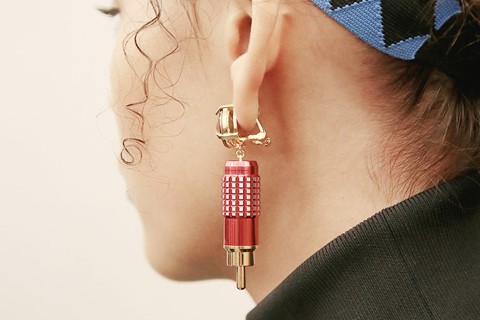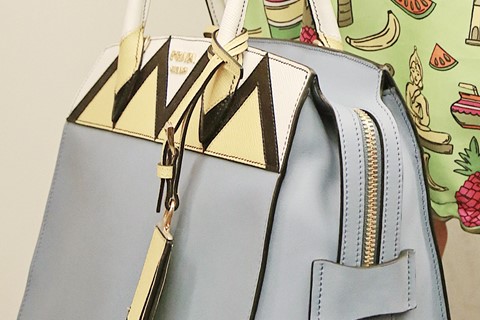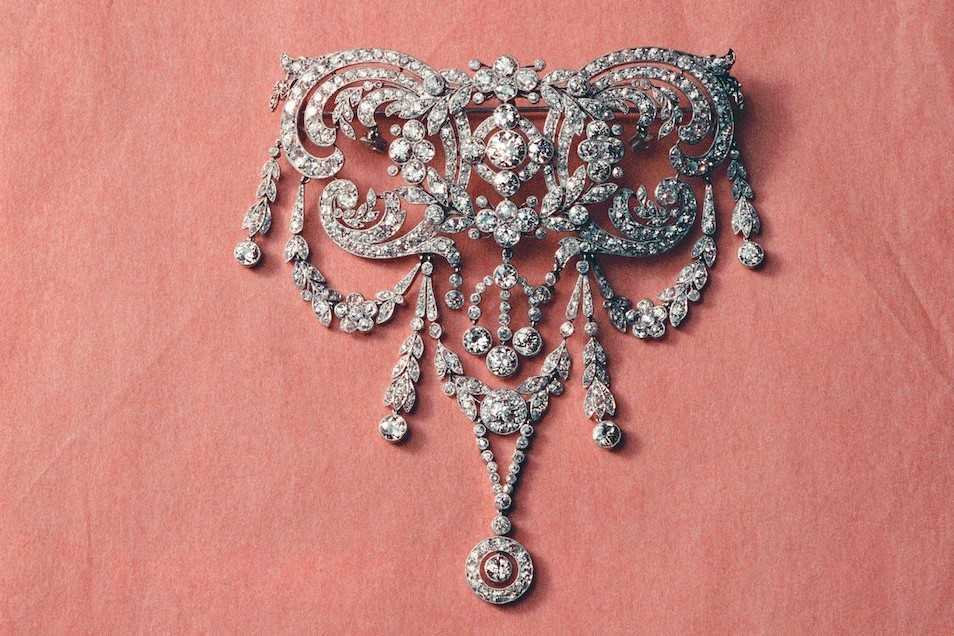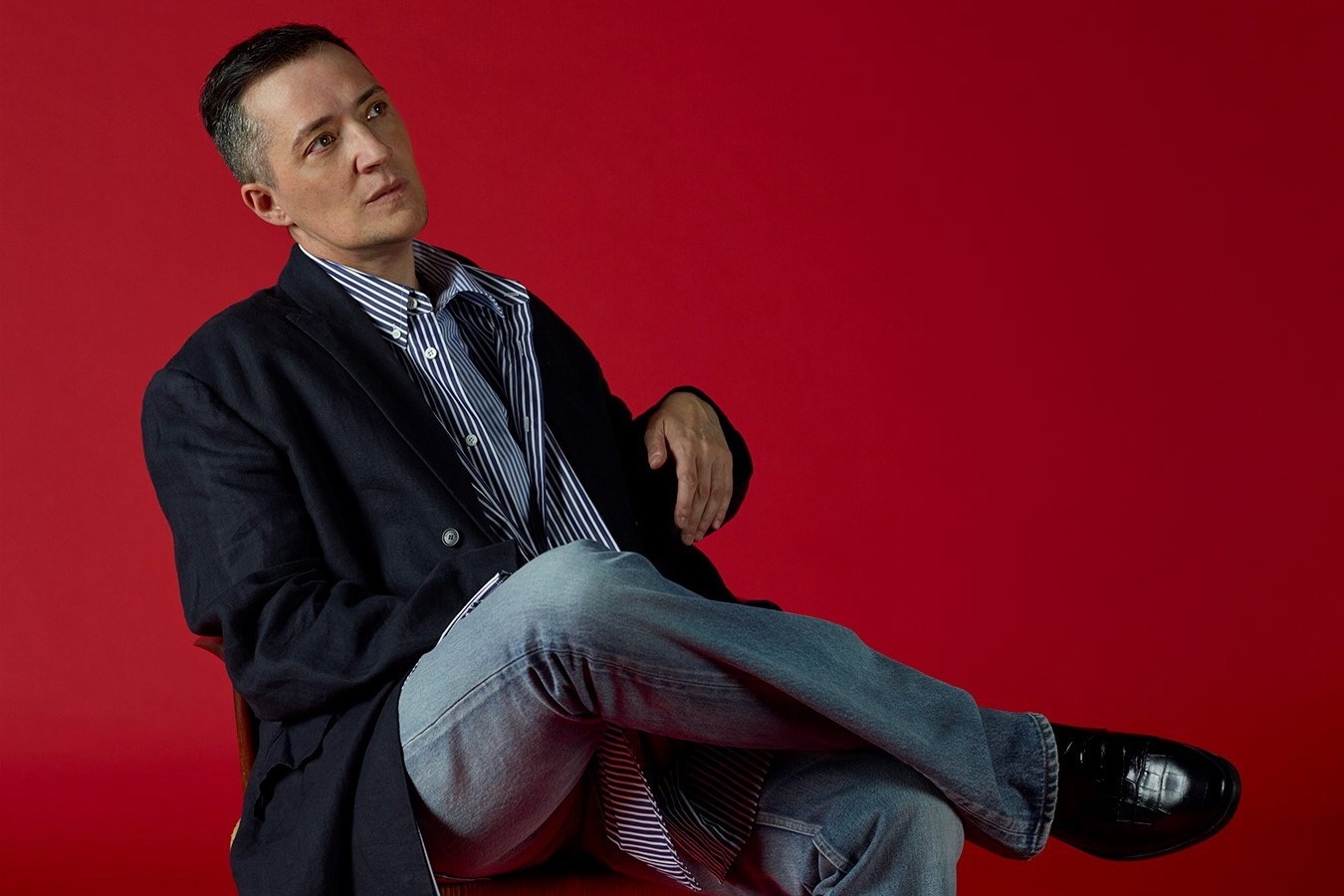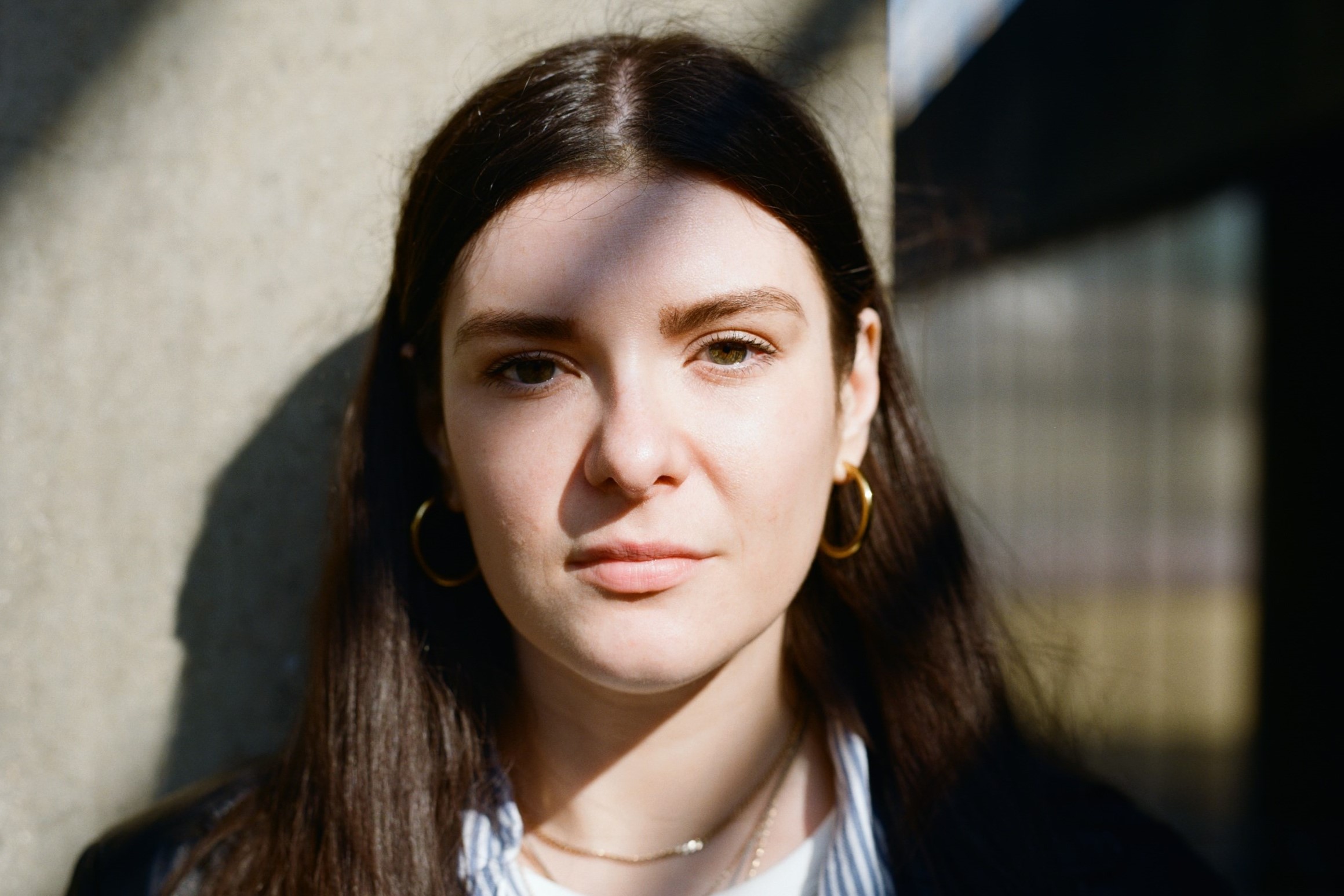If last season’s Prada collection was a journey across the oceans, this season was a trip of a different sort. “Let’s get unconscious,” drawled a Madonna remix over the sound system as a stream of models took to the runway, swaddled in outfits that readied them for any eventuality. Wearing torches and pac-a-macs, they exhibited the sort of preparedness one might have expected to see at 90s raver festivals like Tribal Gathering or Spiral Tribe. “The past is over and I want to take care of the present,” announced Mrs Prada backstage and, while there are plenty of bleak comparisons to be made between the current, separatist state of political affairs and the eclectic cultural references that she sent onto the runway, there was something distinctly lighthearted about it all.
There was an ecstasy-addled freneticism and trance party aesthetic present not only in the rainbow-thatched macs, geothermal prints and era-specific eyewear, or the trippy soundtrack of Björk and Faithless, but also in the zealous embrace of everything and everyone that marked the rave scene. As those of us in Europe await the result of Brexit ballot boxes amidst a climate of confusion, upheaval and fear, Prada offered an almost utopian reminder of togetherness – but without the kumbayas or explicit liberalism one might expect from such a determinedly contemporary collection.

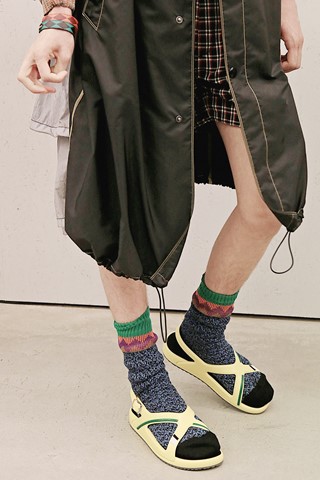
The Digital Age
While the world at large might be discussing immigration, isolation and inertia, over recent months it has been Prada’s financial situation that has dominated the fashion pages but, for S/S17, these issues were clearly being countered by the sheer abundance of product on offer. Clothes were literally heaped onto the models – extra coats spilled out of bags, additional pairs of shoes hung from rucksacks, entry-point knick-knacks were dangling from every strap – and thus there were perhaps more options than ever before for those who will choose to buy from the collection. But, with a wry wink at those critics who have remarked that Prada is behind the times when it comes to the digital age, Mrs Prada celebrated the era that marked both the internet’s inception and the start of her reign in fashion. She seemed to be reminding us that she’s certainly not lagging behind: she’s always been a few paces ahead.
“Google Earth: that is the world” – Miuccia Prada
It was during 1989 that Prada launched its womenswear – the same year that Tim Berners-Lee invented the World Wide Web. As Prada quickly became synonymous with modernity, the world opened up and connected people to each another like never before, through Compuserve forums and AOL discussion boards and ICQ instant messaging. It was the second wave of free love; not only were plenty of people dosed up on MDMA, but a new world was on offer, and it was rife with possibility. “How do we embrace the architecture of limitless technology?” asked one of the captions to the lo-fi countdown to the show, published via Instagram. “What are the boundaries of technotravel?” read another. Prada’s boys and girls not only celebrated the literal freedom of travel – branded water bottles and saffiano-wrapped torches dangling in tow – but freedom of a more abstract kind; the freedom of information and communication that was seen on cartographic prints. As Mrs Prada explained, that reference was taken from Google Earth, and “that is the world.”
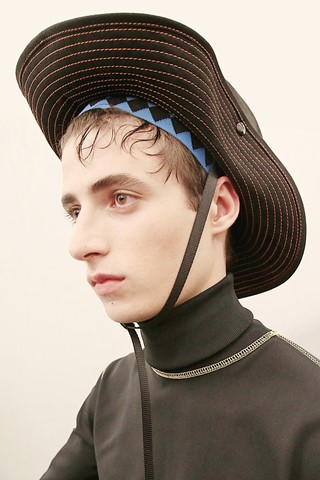
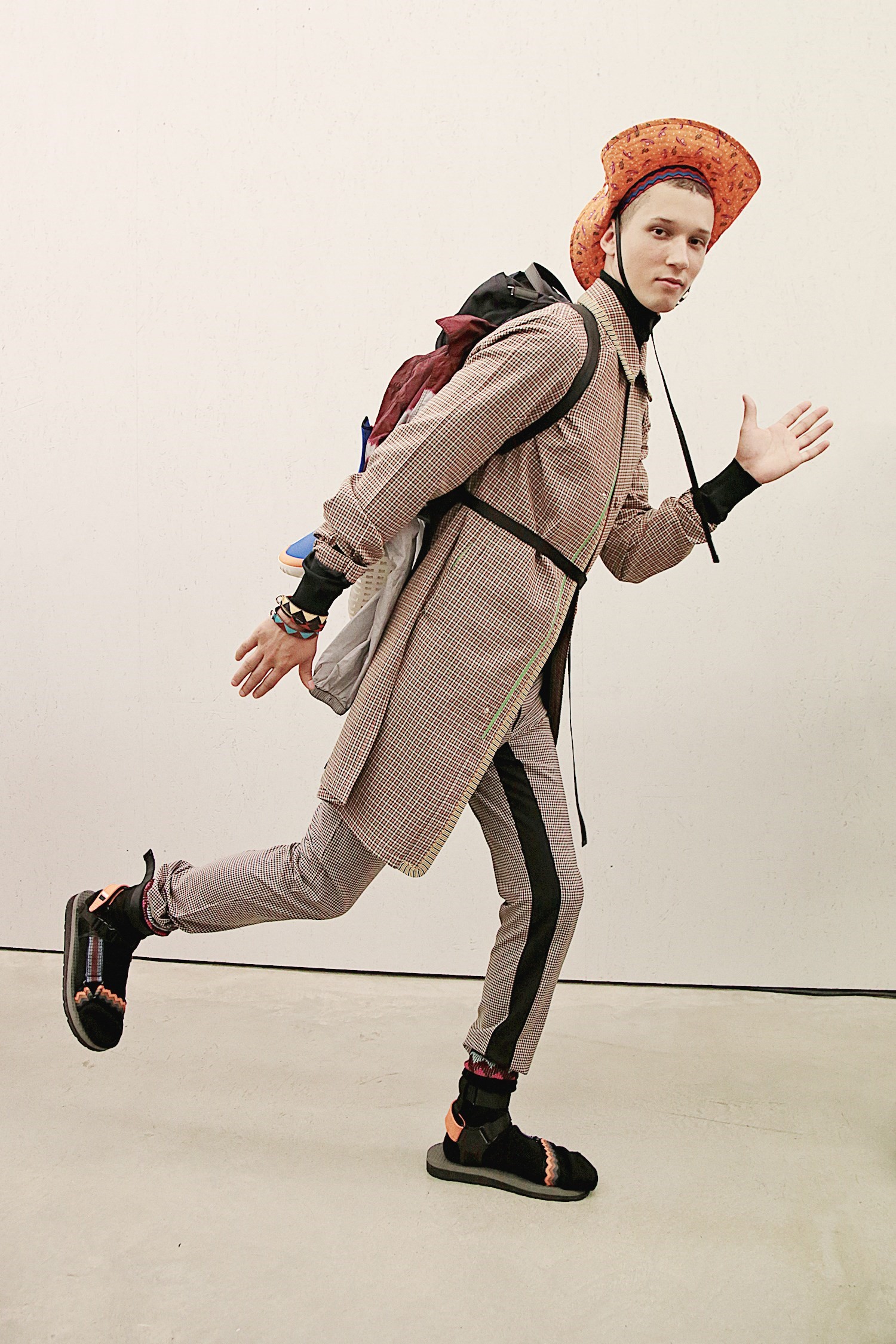
Everyone, Everything, Everywhere
There was also the far more literal rendering of cultural crossover, as seen in the cartoonish prints of Icelandic Inuits and praying Buddhas that appeared on shirts, the mini sombreros and little elephants that decorated assorted small leather goods. These prints were an affectionate allusion to tourist souvenirs, a celebration of exploration – in fact, just arriving within the Prada showspace felt like you were exploring something. Not only was it raining outside in Milan, and thus steamy and humid inside, but one had to traverse some dimly lit corridors filled with Prada’s new fragrance before arriving in a new world filled with a series of mesh structures illuminated by psychedelic neon lights. The sounds of birds, or crickets, or something of that sort filled the air – and, between that and the humidity, you suddenly felt as though you were in a rainforest, or the reptilian area at the zoo.
“What connects the competing grids between nature and technology?” – Prada
“What connects the competing grids between nature and technology?” asked another one of those aforementioned Instagram teasers. Upon speaking to Frédéric Sanchez, the man responsible for the music at Prada's shows, that question was answered. He had composed these natural noises electronically: the sounds of rainforests, satellites, spaceships, the sounds that he imagined the planets might make as they turn on their axes. These are sounds that can only be detected through the use of electronic antennae: the product of nature and technology when they are aligned rather than posited in opposition to one another, and they were later woven between the layers of Primal Scream, Björk and Faithless that narrated the runway. It was the harmony of the 1990s and the contemporary, the digital and the human, the exotic and the prosaic, that made this collection just so appealing – a symbiosis of everyone, everything, everywhere.
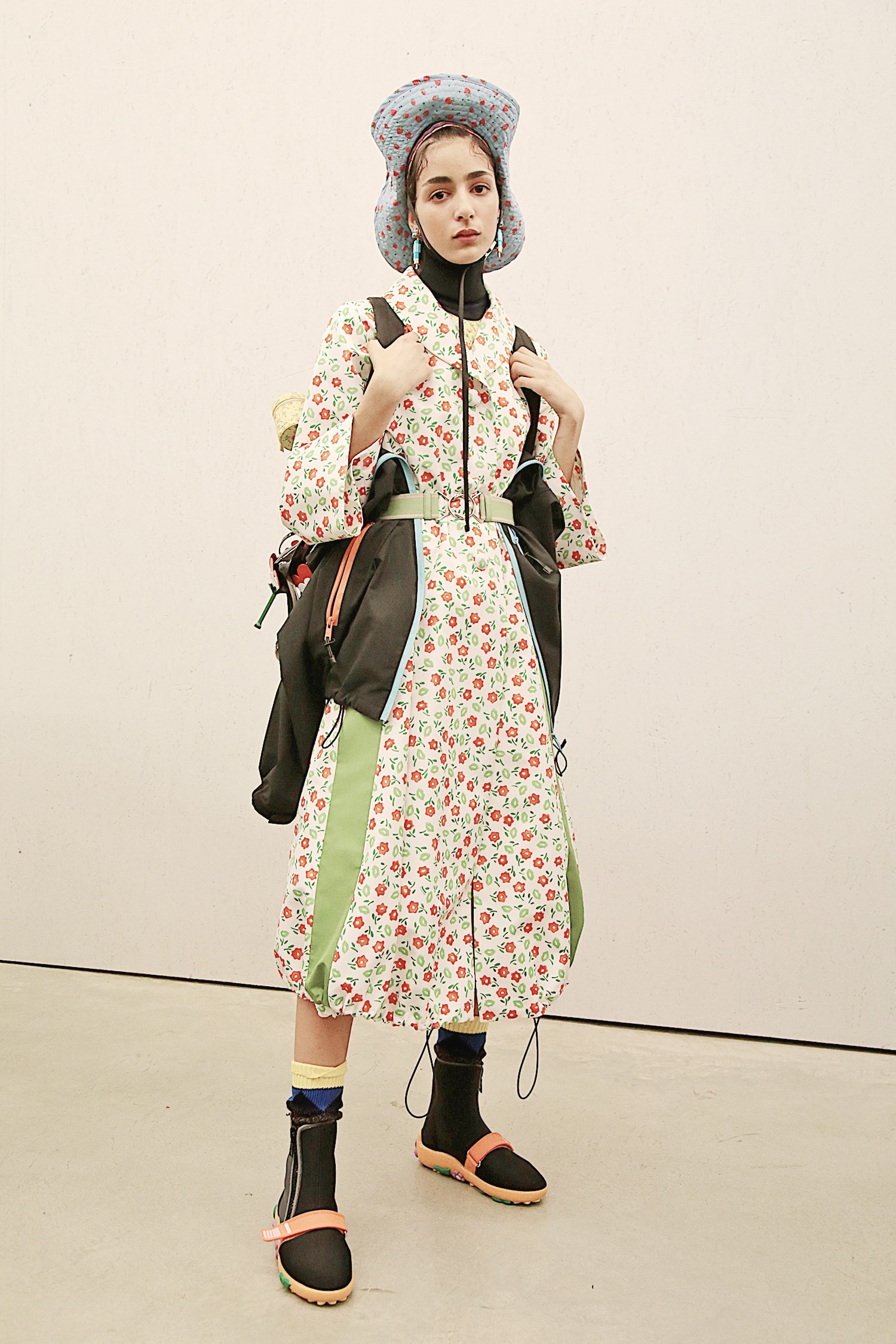

Layers of Clothes: Layers of Meaning
We all know that a Prada show is composed of seemingly endless layers – this time, there were the multiple sheets of plastic that formed the invitation, the overlaid grids of metal that made up the runway, the soundscape composed of myriad origins. Thus, although there might have been an elaborately constructed optimism and connectedness that permeated the pieces, everyone seemed fully aware that this season was certainly a part two, the next chapter in the story initiated during menswear A/W16. But while the figures that walked that runway were travellers in clothes that addressed “immigration, famine, assassination, pessimism,” this time they had arrived to explore “this idea of travelling, of sharing, of joining cultures,” and they were welcomed with open arms.
“The backpack is where you put your home, your shelter, in case of difficult times” – Miuccia Prada
There was practicality in this self-stated “activewear”: ripstop fabric – the interlocked, reinforced nylon ordinarily used for camping equipment and firefighter gear – was used for overcoats and dresses; padded quilting – the sort that really keeps you warm – was turned into jackets; plastic sandals embellished with (plastic) flowers could probably be hosed down if they got muddy. But, peel away the layers and there were suits of kid mohair with perfectly elegant satin collars and woven silks that looked like polyester but felt luxuriant. “There was also the idea of safety,” Mrs Prada said. “The backpack is where you put your home, your shelter, in case of difficult times.” The backpack is also what reinvigorated the house back in 1984, its industrial-weight nylon revolutionising the fashion landscape with utilitarian chic. Now, stuffed with an abundance of pieces that are sure to sell – perhaps even online – it is where it might once again find salvation. “That was fun,” Mrs Prada summated as she closed her brief interview backstage. And she’s right, it was – fun, smart and utterly saleable.
